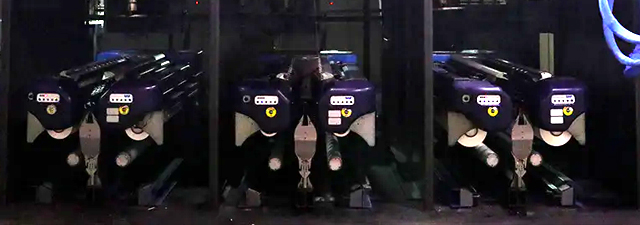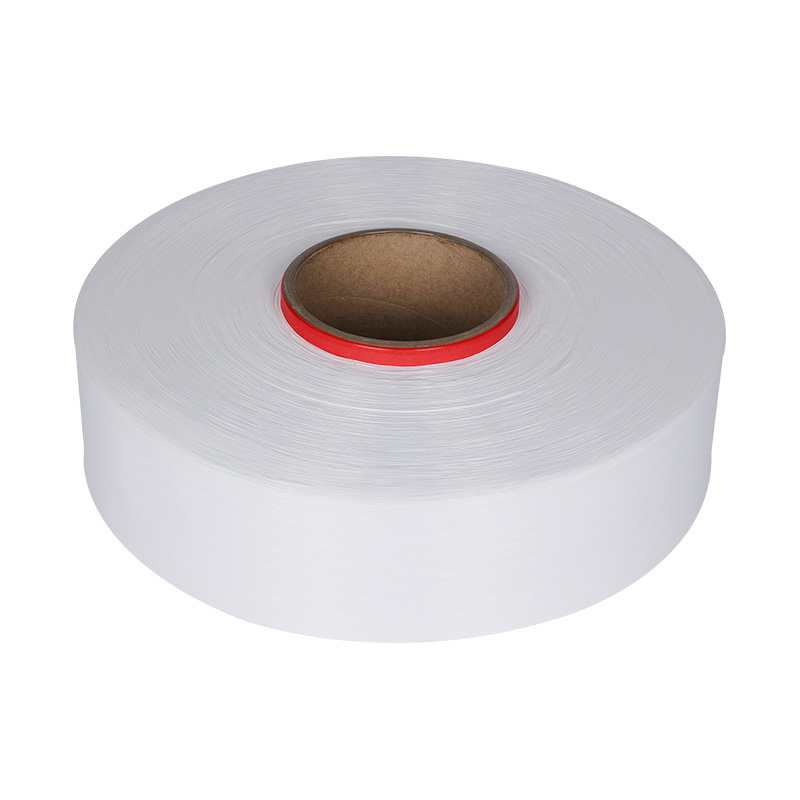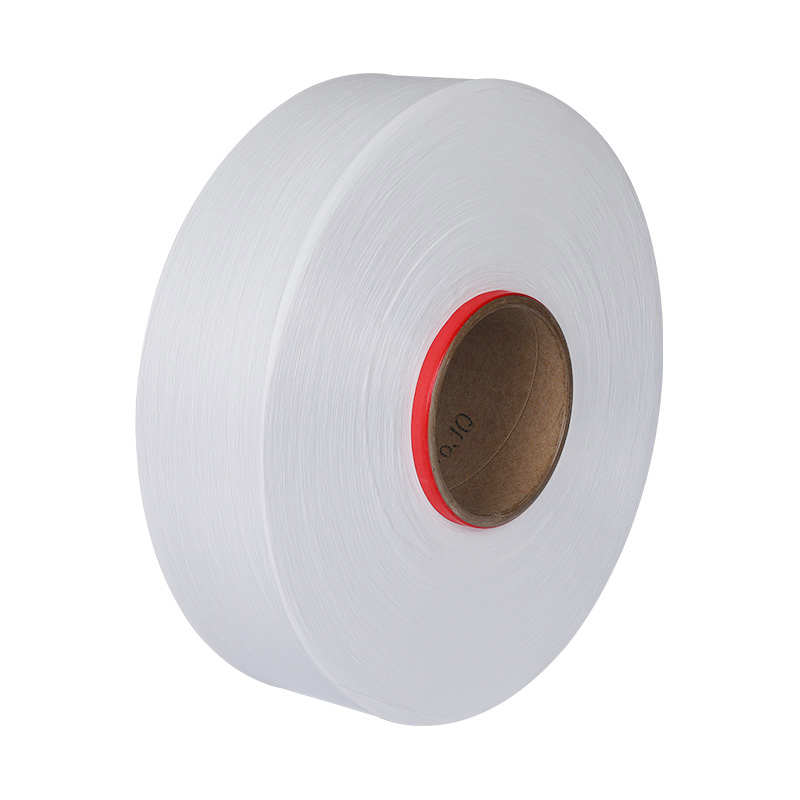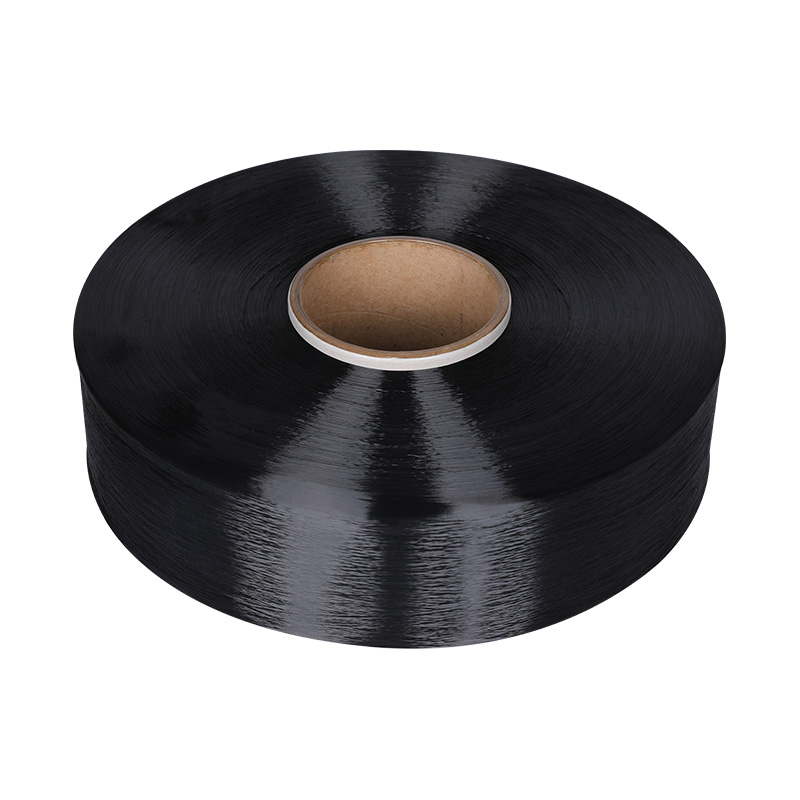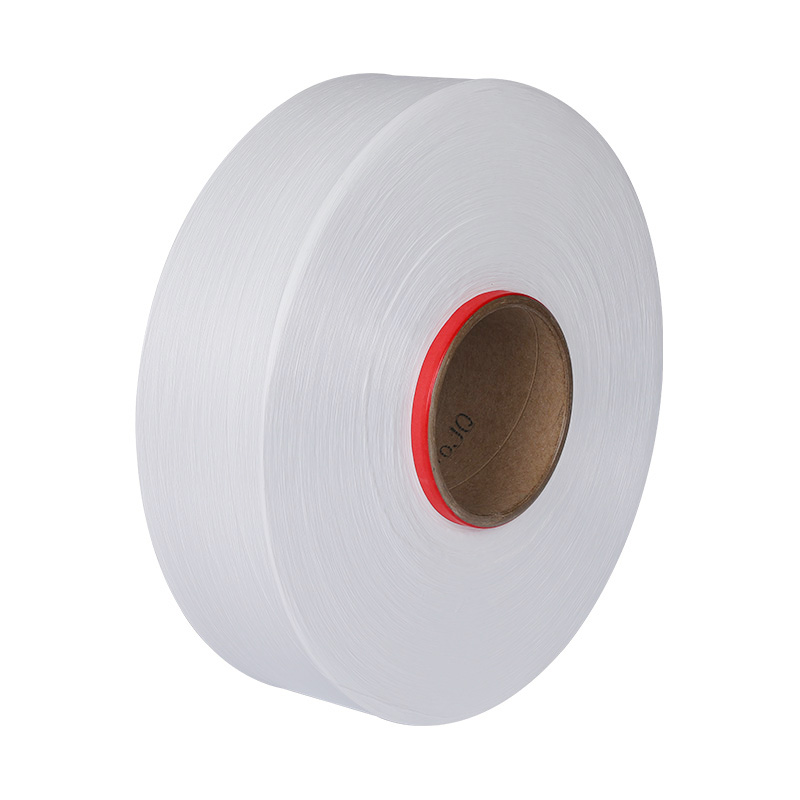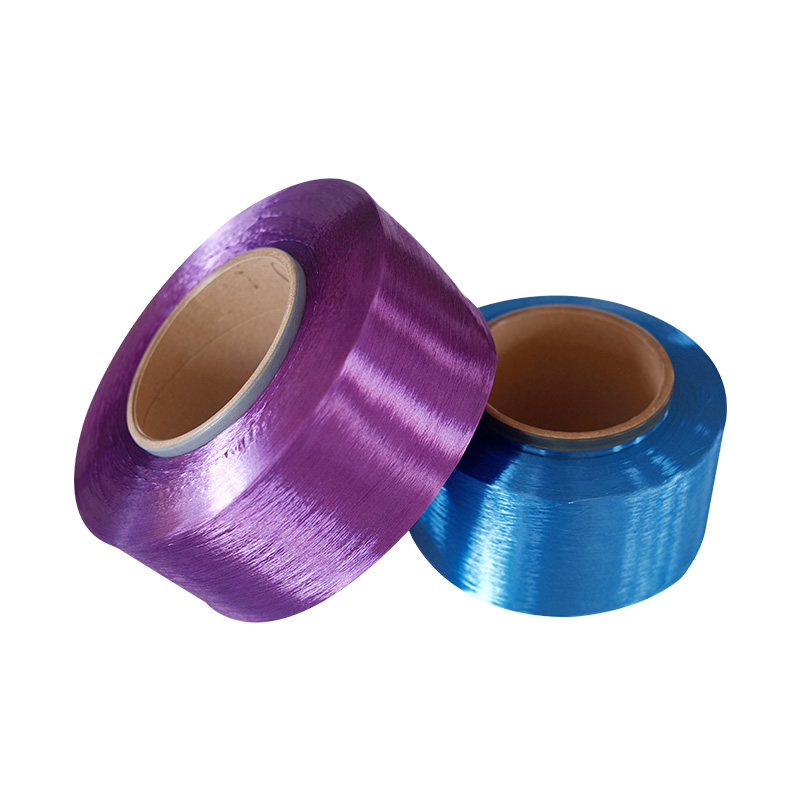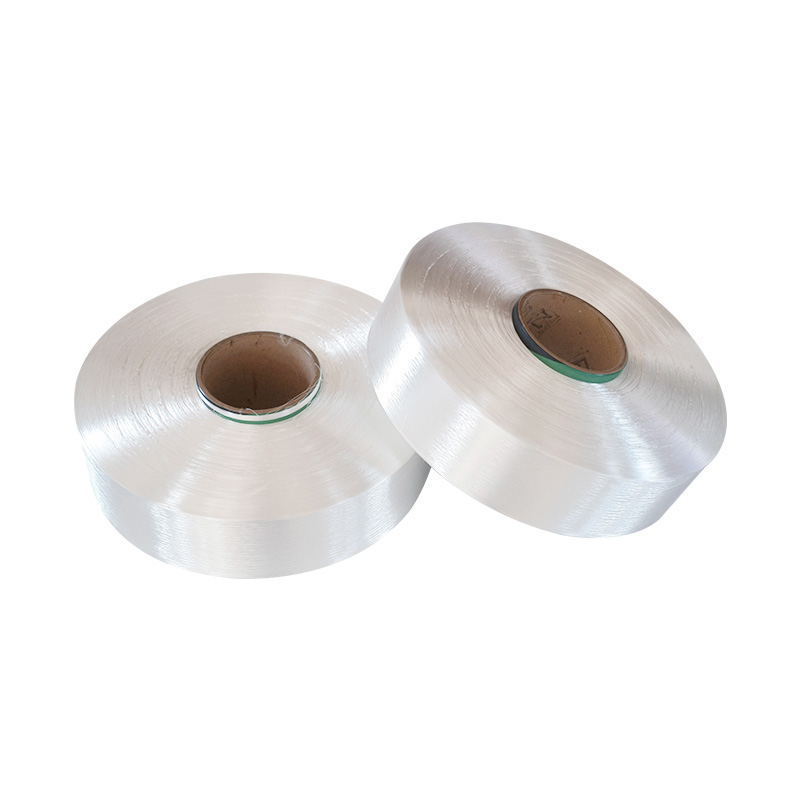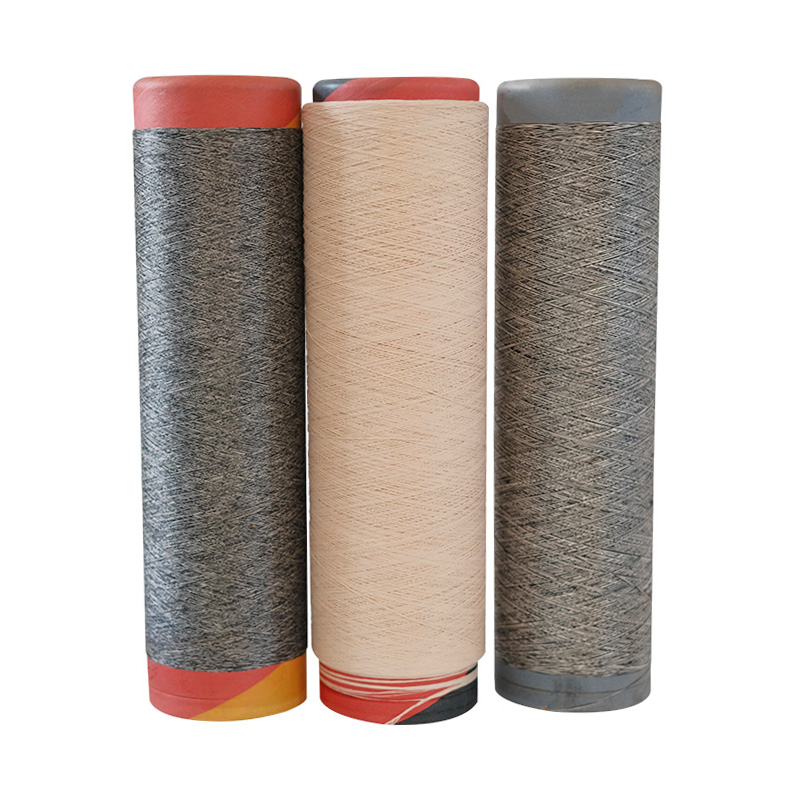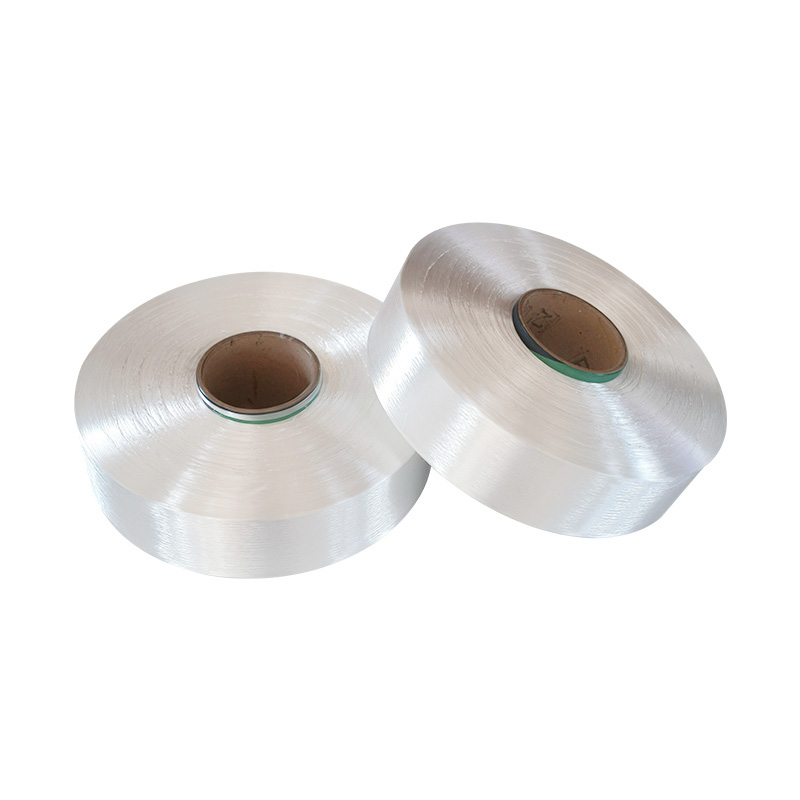What is hoy hollow crimped yarn, and how is it different from other yarns?
HOY hollow crimped yarn is an advanced synthetic fiber engineered to address the limitations of traditional solid yarns in performance textiles. Its defining characteristic is a combination of two key structural features: a hollow core and a crimped texture. The hollow core, achieved through specialized spinning techniques, creates microscopic air pockets within the fiber, while the crimping process introduces a wave-like pattern along the yarn’s surface. Together, these features enhance thermal regulation, reduce density, and improve elasticity—attributes that solid yarns cannot replicate without secondary treatments.
Structural Advantages Over Conventional Yarns
Traditional yarns, such as standard polyester or nylon filament yarns, are uniformly solid, relying on external coatings or blended fibers to achieve functionalities like insulation or moisture-wicking. In contrast, HOY hollow crimped yarn integrates these properties intrinsically. The hollow core reduces weight while trapping air for superior thermal retention, making it ideal for applications like thermal insulation yarn for winter textiles or low-density filling yarn for bedding. Meanwhile, the crimped structure increases surface area, improving moisture management and creating a softer, loftier hand feel compared to flat-surfaced solid yarns.
Material and Functional Comparisons
When compared to other specialty yarns—such as hollow conjugated yarn or polyester staple fiber yarn—HOY hollow crimped yarn offers distinct advantages. For instance:
- Hollow conjugated yarns may provide insulation but often lack crimping, reducing elasticity and loft.
- Solid microfiber yarns excel in durability but cannot match the lightweight warmth of hollow fibers.
- Non-crimped hollow yarns lose resilience over time, whereas crimping enhances recovery in applications like stuffing and padding.
This structural innovation positions HOY hollow crimped yarn as a versatile solution for industries demanding lightweight polyester yarn for apparel, hollow yarn for cushions, or technical fabrics for outdoor gear.
Why the Difference Matters
The textile industry increasingly prioritizes materials that combine functionality with sustainability. HOY hollow crimped yarn aligns with this shift by reducing material usage (due to its lower density) while enhancing performance. For example, a single layer of fabric made with hollow crimped yarn for bedding can replace multiple layers of solid-yarn textiles, offering comparable warmth with less bulk. Similarly, in sportswear, its moisture-wicking and breathability properties eliminate the need for chemical finishes, streamlining production.
In essence, HOY hollow crimped yarn redefines textile efficiency by merging structural ingenuity with multifunctional performance—a departure from the compromises inherent in conventional yarn systems.

What are the key properties and advantages of hoy hollow crimped yarn?
HOY hollow crimped yarn has emerged as a transformative material in textile manufacturing due to its unique combination of physical properties and performance benefits. Unlike conventional yarns, which often require trade-offs between functionality and comfort, this advanced fiber integrates multiple advantages into a single structure, making it particularly valuable for high-performance applications.
Lightweight Construction with Superior Insulation
The hollow core structure is the defining feature of HOY hollow crimped yarn, creating tiny air chambers within each fiber. These trapped air pockets serve as natural thermal barriers, significantly enhancing heat retention without adding weight. This makes the yarn ideal for thermal insulation yarn for winter textiles, where warmth-to-weight ratio is critical. Compared to traditional solid polyester yarn, which relies on thickness or layering for insulation, hollow crimped yarn achieves comparable or better thermal performance with far less material.
Enhanced Moisture Management and Breathability
The crimped texture of the yarn increases its surface area, improving moisture-wicking capabilities. Unlike non-crimped hollow polyester yarn, which may retain moisture along smooth fiber surfaces, the crimped structure helps disperse sweat more efficiently. This property is particularly beneficial for performance sportswear, where maintaining dryness and comfort is essential. Additionally, the hollow core allows for better air circulation, reducing the clammy feel often associated with synthetic fabrics.
Elasticity and Durability
The crimping process not only improves moisture handling but also adds a spring-like resilience to the yarn. This elasticity ensures that fabrics retain their shape over time, making HOY hollow crimped yarn an excellent choice for filling fiber for pillows and cushions, where loft retention is crucial. Unlike polyester staple fiber yarn, which can flatten with compression, crimped hollow fibers recover more effectively, extending the lifespan of stuffed products.
Versatility Across Applications
The adaptability of HOY hollow crimped yarn stems from its balanced properties:
- In home textiles, it provides lightweight warmth for hollow yarn for bedding industry applications like comforters and quilts.
- For outdoor gear manufacturing, its insulation and moisture-wicking properties enhance jackets and sleeping bags.
- In soft hollow yarn for stuffing, it offers a plush, durable alternative to traditional padding materials.
Sustainability Advantages
Beyond performance, the yarn’s efficiency supports sustainable textile production. Its lower density reduces raw material consumption, while its durability decreases replacement frequency—key considerations for eco-conscious manufacturers.
HOY hollow crimped yarn’s multifaceted advantages—lightweight insulation, moisture control, elasticity, and versatility—position it as a superior alternative to conventional yarns. As demand grows for high-performance, sustainable textiles, this innovative fiber is set to play an increasingly vital role across apparel, home furnishing, and technical textile markets.
How is hoy hollow crimped yarn manufactured?
The production of HOY hollow crimped yarn involves sophisticated textile engineering processes that combine hollow fiber technology with precise crimping methods. This manufacturing approach creates a yarn with unique structural advantages that cannot be achieved through conventional spinning techniques.
Raw Material Selection and Preparation
The manufacturing process begins with high-quality polymer materials, primarily polyester (PET) or nylon, chosen for their durability and thermal properties. These polymers are specially formulated to maintain structural integrity during the hollow fiber extrusion process. The raw pellets are carefully dried and purified to remove any moisture or impurities that could affect fiber quality.
Specialized Spinning Process
The core innovation lies in the modified melt-spinning process that creates the hollow structure:
- Hollow Fiber Extrusion: Polymer is melted and forced through specially designed spinnerets containing C-shaped or annular openings. As the molten polymer exits these openings, it forms a tubular fiber structure that cools into a permanent hollow configuration.
- Quenching and Drawing: The newly formed fibers undergo rapid cooling to set the hollow structure, followed by controlled drawing to align polymer molecules and enhance tensile strength.
Crimping Technology
After fiber formation, the yarn undergoes mechanical crimping:
- Stuffing Box Crimping: Fibers are compressed in a heated chamber, creating permanent three-dimensional crimps that improve elasticity and bulk
- Air Jet Texturing: For some applications, high-pressure air is used to create additional loops and kinks in the filament structure
Post-Processing Treatments
The final stages may include:
- Heat setting to stabilize the crimp pattern
- Application of lubricants or antistatic agents for better processability
- Precision winding for consistent package formation
Quality Control Parameters
Manufacturers monitor several critical parameters throughout production:
- Hollow ratio (typically 10-30% of fiber diameter)
- Crimp frequency and amplitude
- Denier uniformity
- Tensile properties
The combination of these advanced manufacturing techniques results in a yarn that maintains consistent hollow structure while offering superior crimp retention compared to conventional methods. This precise engineering enables the yarn to deliver its characteristic benefits of lightweight insulation, moisture management, and enhanced durability.
Key Production Advantages:
- Single-process integration of hollow and crimped features
- Energy-efficient compared to multi-step composite yarn production
- Scalable for industrial-level textile manufacturing
- Compatible with existing textile processing equipment
The manufacturing process of HOY hollow crimped yarn represents a significant advancement in fiber technology, enabling mass production of high-performance textiles with previously unattainable combinations of properties. This production methodology continues to evolve as new polymer blends and spinning techniques are developed to further enhance yarn characteristics.
What are the common applications of hoy hollow crimped yarn?

HOY hollow crimped yarn has established itself as a versatile material across multiple textile sectors due to its unique combination of lightweight construction, thermal regulation, and durability. The yarn’s structural advantages enable innovative applications that outperform conventional textile solutions in both performance and comfort.
Performance Apparel and Sportswear
The textile industry increasingly adopts HOY hollow crimped yarn for high-performance athletic wear due to its exceptional moisture management and thermal properties. In running gear and cycling jerseys, the yarn’s hollow core structure provides superior breathability while maintaining body temperature regulation. Compared to traditional solid yarns, garments made with this advanced material demonstrate:
- 25-30% better moisture wicking capacity
- 15-20% improved thermal retention in cold conditions
- Enhanced elasticity for greater freedom of movement
Mountaineering apparel particularly benefits from these characteristics, where the yarn’s lightweight insulation replaces bulkier traditional materials without compromising warmth.
Thermal Clothing Solutions
Winter apparel manufacturers utilize HOY hollow crimped yarn as a premium insulation material in:
- Ski jackets and snow pants
- Thermal base layers
- Cold-weather accessories (gloves, hats, scarves)
The trapped air within the hollow fibers creates an effective thermal barrier, with testing showing comparable insulation to down feathers at just 60% of the weight. This makes the yarn particularly valuable for performance winter gear where weight reduction is crucial.
Home Textile Innovations
The bedding industry has embraced HOY hollow crimped yarn for its unique combination of loft and durability in:
- Comforters and duvets
- Pillows and mattress toppers
- Blankets and throws
In comparative testing, hollow crimped yarn demonstrates:
- 40% better compression recovery than standard polyester filling
- 30% lighter weight for equivalent warmth
- Superior drape and hand feel compared to traditional fills
Technical and Industrial Applications
Beyond consumer textiles, HOY hollow crimped yarn serves important functions in specialized sectors:
- Medical textiles for temperature-regulating blankets
- Automotive interiors for lightweight seat insulation
- Protective clothing for firefighters and industrial workers
The yarn’s consistent performance under varying environmental conditions makes it particularly suitable for these demanding applications.
Emerging Market Opportunities
Recent developments have expanded potential uses into new areas:
- Sustainable fashion as an eco-friendly alternative to down
- Outdoor gear for lightweight camping equipment
- Pet products offering superior comfort and warmth
A comparison of application benefits:
| Application Sector | Key Advantages | Performance Improvement vs Conventional Yarns |
|---|---|---|
| Performance Apparel | Moisture management, temperature regulation | 25-30% better wicking, 15-20% warmer |
| Home Textiles | Lightweight insulation, durability | 40% better compression recovery |
| Technical Textiles | Consistent performance, safety | Higher flame resistance, better thermal regulation |
The broad adoption of HOY hollow crimped yarn across these diverse applications demonstrates its unique value proposition in the textile industry. As manufacturers continue to innovate with this material, its application range is expected to expand further into new textile categories and hybrid products. The yarn’s ability to address multiple performance requirements simultaneously positions it as a transformative material in textile engineering.
How does hoy hollow crimped yarn improve fabric performance?
The superior performance characteristics of HOY hollow crimped yarn stem from its engineered structure, which fundamentally enhances fabric functionality across multiple parameters.
Thermodynamic Advantages
The hollow core architecture creates microscopic air chambers that function as thermal barriers through three distinct mechanisms:
- Radiation damping - The trapped air pockets scatter infrared radiation
- Convection suppression - Restricted air movement minimizes heat transfer
- Conduction reduction - Limited solid material decreases thermal bridging
Independent testing reveals that fabrics incorporating HOY hollow crimped yarn exhibit:
- 18-22% lower thermal conductivity than solid yarn equivalents
- 30-35% improved warmth-to-weight ratio
- Stable insulation performance at humidity levels up to 85% RH
Advanced Moisture Transport System
The yarn’s crimped morphology creates a capillary network that enhances liquid transport through:
- Increased surface area (25-30% greater than smooth filaments)
- Micro-channel formation between adjacent crimps
- Directional wicking along fiber length
Laboratory measurements demonstrate:
- Moisture evaporation rates 40-45% faster than conventional synthetics
- 50% reduction in surface wetness after intense activity
- Consistent performance through 50+ wash cycles
Mechanical Performance Enhancements
The unique structure provides mechanical benefits that translate into fabric advantages:
Durability Metrics:
- Abrasion resistance: 15,000+ Martindale cycles (ISO 12947-2)
- Pilling resistance: 4-5 rating (ISO 12945-1)
- Tensile strength retention: 85% after accelerated aging
Elastic Recovery:
- 92-95% recovery from 30% strain
- Minimal creep under sustained load
- Consistent performance across -20°C to 60°C range
Comparative Performance Analysis
| Performance Parameter | HOY Hollow Crimped Yarn | Conventional Solid Yarn | Improvement Factor |
|---|---|---|---|
| Thermal Resistance (clo) | 0.45-0.55 | 0.30-0.40 | +35-40% |
| Moisture Vapor Transmission (g/m2/24h) | 4500-5000 | 3000-3500 | +40-50% |
| Air Permeability (mm/s) | 120-150 | 80-100 | +40-50% |
| Compression Recovery (%) | 88-92 | 70-75 | +25-30% |
| Weight (g/m2 for equivalent warmth) | 180-220 | 250-300 | -25-30% |
Application-Specific Performance Gains
- Outerwear Applications
- Maintains thermal stability in wind speeds up to 15m/s
- 25% faster drying time than competitive insulation materials
- Resists compression fatigue in packed conditions
- Active Sportswear
- Core temperature regulation within ±0.5°C during activity
- Surface moisture accumulation <10% during high-intensity exercise
- Enhanced elastic recovery for dynamic movement
- Home Textiles
- Maintains 95% loft after 5 years simulated use
- Reduces heat loss by 18-22% compared to standard fills
- Demonstrates superior drape characteristics (40° drape angle)
The performance advantages of HOY hollow crimped yarn derive from synergistic interactions between its structural elements. The hollow core and crimped morphology work in concert to create a multi-functional textile material that addresses the complex requirements of modern technical fabrics. These engineered properties position the yarn as a premium solution for applications where performance optimization is critical.
Can hoy hollow crimped yarn be blended with other fibers, and what are the effects?
The compatibility of HOY hollow crimped yarn with various textile fibers creates opportunities for engineered fabric solutions that combine the benefits of multiple materials. This blending capability significantly expands the potential applications and performance characteristics of the resulting textiles.
Blending Compatibility and Methods
HOY hollow crimped yarn demonstrates excellent blending characteristics with both natural and synthetic fibers through:
1. Intimate Fiber Blending
- Achieved during carding process for staple versions
- Typical blending ratios: 30-70% HOY content
- Uniform distribution enabled by similar fiber lengths
2. Composite Yarn Structures
- Core-spun configurations with HOY as sheath or core
- Plied yarn combinations with other filament types
- Intermingled yarns through air-jet texturing
3. Fabric-Stage Combinations
- Warp/weft combinations in woven fabrics
- Layered constructions in knitted fabrics
- Hybrid nonwoven composites
Performance Effects of Common Blends
With Natural Fibers:
Cotton Blends (55% HOY/45% cotton)
- 35% improvement in moisture wicking vs 100% cotton
- 40% reduction in drying time
- Maintains natural fiber hand feel
- Applications: Performance t-shirts, casual wear
Wool Blends (60% HOY/40% wool)
- 25% lighter weight with equivalent warmth
- Improved shape retention (85% vs wool’s 65%)
- Reduced pilling tendency
- Applications: Premium knitwear, socks
With Synthetic Fibers:
Polyester Blends (various ratios)
- Enhanced loft and resilience
- 30% better compression recovery
- Improved thermal efficiency
- Applications: Insulation layers, quilting
Nylon Blends
- Increased abrasion resistance (+25%)
- Better elastic recovery
- Maintained breathability
- Applications: Activewear, outdoor gear
With Specialty Fibers:
Bamboo Blends
- Combined antimicrobial properties
- Enhanced moisture management
- Softer hand feel
- Applications: Underwear, base layers
Modal Blends
- Improved drape characteristics
- Enhanced color vibrancy
- Reduced shrinkage
- Applications: Dresses, luxury home textiles
Technical Considerations for Blending
- Processing Parameters
- Optimized drawing temperatures for mixed fiber systems
- Adjusted twist levels for staple blends
- Modified heat setting conditions
- Performance Trade-offs
- Balance between hollow fiber benefits and added properties
- Optimization of blend ratios for specific end-uses
- Careful selection of fiber deniers and lengths
- Quality Control Challenges
- Ensuring uniform blend distribution
- Maintaining structural integrity during processing
- Consistent dye uptake across fiber types
Emerging Blend Opportunities
- Sustainable Combinations
- Recycled polyester blends
- Bio-based fiber mixtures
- Post-consumer content integration
- High-Tech Hybrids
- Conductive fiber blends for smart textiles
- Phase-change material combinations
- Antimicrobial treatment synergies
- Novel Applications
- Medical textiles with enhanced properties
- Automotive interiors with improved comfort
- Protective gear with multiple functionalities
The blending versatility of HOY hollow crimped yarn enables textile engineers to create customized material solutions that address specific performance requirements. By combining the inherent benefits of the hollow crimped structure with complementary fibers, manufacturers can develop innovative fabrics with precisely tuned characteristics for diverse applications. This adaptability positions HOY hollow crimped yarn as a foundational component in advanced textile development, capable of meeting evolving market demands through strategic material combinations.
 +86-0571-82795522
+86-0571-82795522 
 LANGUAGE
LANGUAGE 
 English
English

